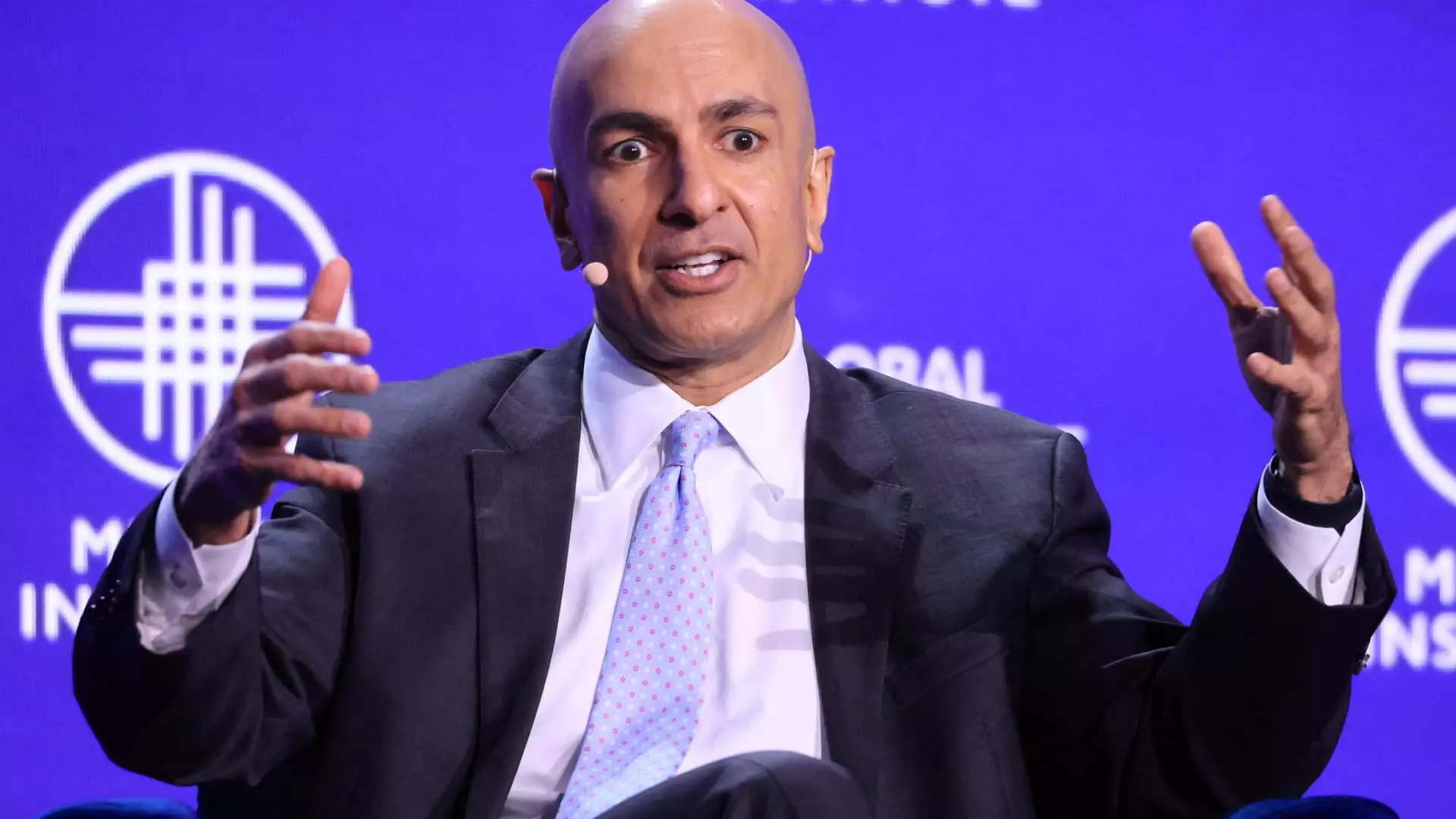The debate surrounding tariffs and their potential economic repercussions is gaining renewed attention as President-elect Donald Trump proposes a series of aggressive trade policies. Federal Reserve President Neel Kashkari recently articulated concerns that these proposals could have lasting implications on inflation, particularly if they precipitate retaliatory actions from global trade partners. Understanding the dynamics of this scenario is essential for grasping the larger picture of U.S. economic stability.
Kashkari’s comments highlighted a crucial aspect: while one-time tariffs may not significantly impact long-term inflation, the equation shifts dramatically if trade disputes escalate. A simple application of tariffs on imports can lead to a “tit for tat” scenario where nations impose reciprocal tariffs against one another. This escalation poses a threat not only to trade relations but also to the overall economic environment, potentially fueling inflationary pressures rather than alleviating them.
Trump’s earlier term marked the beginning of a trade war with China, demonstrating how swiftly tariffs can alter the economic landscape. For instance, the inverse relationship between tariffs and supply chain costs can lead to increased prices for consumers. Trump’s latest proposals include a universal tariffs strategy, particularly a steep 60% tariff on Chinese imports. Such a blanket approach raises alarms among economists and market analysts who anticipate an inflation spike, exacerbating the challenges that have only recently begun to subside after years of pandemic-driven economic turmoil.
Presently, the Federal Reserve is actively engaged in adjusting monetary policy to combat inflation, with recent interest rate cuts reflecting these efforts. Kashkari pointed out that, while inflation has shown signs of cooling, it would be premature to declare victory in this ongoing battle. The Central Bank is aiming for a consistent inflation target of 2%, and as a result, any looming threats—such as those posed by Trump’s proposed tariffs—necessitate a cautious approach moving forward.
Following two recent interest rate cuts and the expectation of further reductions, the Fed is treading carefully. The interplay between fiscal policy decisions and global economic events demands vigilance, as factors such as international trade and domestic policies play pivotal roles in shaping inflation trends. The current trajectory suggests that the Fed remains committed to this cautious strategy, watching how the economic landscape evolves in response to proposed tariffs and other factors.
The notion of political influence over the Federal Reserve looms large, particularly with high-profile advocates, including Elon Musk, urging more direct presidential involvement in monetary policy. However, Kashkari has affirmed the Fed’s commitment to its independence, arguing that its decisions should be anchored in economic rationale rather than political motivations. This insistence on autonomy is vital to ensuring that monetary policy remains focused on the health of the economy rather than short-term electoral ambitions.
The interplay between tariff proposals and inflation is a burgeoning concern that demands careful analysis from economic experts and decision-makers alike. As Trump’s administration explores these bold trade measures, the feedback loop between inflation, consumer prices, and retaliatory tariffs will be one to watch. While the Federal Reserve currently emphasizes a wait-and-see strategy, sustained vigilance is necessary to navigate the potential headwinds and ensure long-term economic stability. What lies ahead remains uncertain, but the potential for increased inflationary pressures and economic instability should compel all stakeholders to engage in meaningful discourse.

